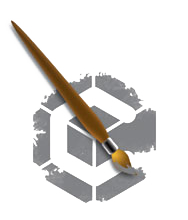File Translation Tutorial for Graphite™
Ashlar-Vellum is committed to providing our customers with the best collaborative tools on the market, allowing you to work effectively with other designers, engineers, clients and manufacturers.
Once again we’d like to remind you that a file translation is exactly that—a translation—and certain subtleties may be lost in the process if you are not careful.
Discussed in this article are the common issues that occur when translating files into and out of Graphite precision 2D/3D CAD software, offering you tips to get the greatest possible results.

Before You Begin
Just as with 3D modeling, before beginning a file translation for Graphite, it is important to establish a clear purpose for each particular translation. You may be showing a client a design or exchanging data for FEA analysis. Maybe you’re sending a 2D pattern to a cutting machine or other manufacturing device. Whatever the purpose, if you’re trying to accomplish more than one goal, consider more than one translation.
Before translating a file, stop and consider if the translated data must be edited or just viewed and/or printed. If it is to be viewed or printed, use the Graphite Share utility available FREE on the Ashlar-Vellum website. Graphite Share allows you to open, view, print and export Graphite and older Vellum 2D/3D files. Send Graphite Share to a client or manufacturer free of charge along with a Graphite file. Share allows them to export the file themselves, experimenting with the file format that works best for their needs.
On the other hand, if the translated data must be manipulated and saved, consider the target application. Can it handle the data being translated to it properly, such as multiple sheets in one file?
Remember that re-importing a file successfully into the original format neither proves nor disproves its translation accuracy. It is no real indication of success nor failure.
Older versions of Vellum had difficulties with metric-to-English conversions. These were addressed in Graphite v6, but be aware of the issues if you have archive files that you’re trying to convert.
Use Zip or Stuff-in to compress files before emailing. Using an email program’s built-in compression has unreliable results on graphics, often converting them to text files. This is especially true if emailing a file from a Mac to a Windows-based system.
Specific File Format Advice Regarding Graphite
IGES. Dating back to 1979, the Initial Graphics Exchange Standard was established by early pioneers in the CAD industry. Software and graphics standards have evolved significantly since that time and today IGES is referred to by many in the industry as “I Guess” as its results are less than consistent. The IGES v4.0 translator was implemented in Graphite, however, our technical support department maintains this format is a can of worms, best left alone. If there is any other translation option, we recommend trying that first.
PDF. A Portable Document Format writer is now built in to Graphite v8. For earlier versions of Graphite use Adobe Acrobat or Distiller to create PDF files. PDFs created through the PDF maker included with the operating system are sometimes less complete.
DXF/DWG. It is important to remember that DXF and DWG are NOT published “standards.” They are file formats invented and encoded by Autodesk.
Graphite provides exact 2D/3D wireframe geometry for DXF and DWG translations. While Graphite offers high visual fidelity for dimensions and text in these formats, if your goal is to import or export archive drawings, preserving the text and dimensions, we recommend using a free copy of Ashlar-Vellum Share or using PDF.
DXF/DWG files present several inherent challenges. First, they do not always specify units. Be sure to set Graphite to match the source file prior to importing it. Second, because individual users customize their systems, there is often difficulty in translating fonts, line weights and patterns, dimensioning styles, hatch patterns and custom symbols. Be sure these are also present on your destination system.
Be aware that DXF and DWG are different and may provide very different results. We often recommend trying them both to see which provides the best results for your file.
Ashlar-Vellum is always asked about support for the latest or upcoming version of DXF. While the encryption on any new version is quickly broken, it always requires changes to our file structure and sometimes will not be incorporated until a future release. If you need to convert to a format we do not yet support, we recommend purchasing Any DWG DXF Converter for about US $75 from AnyDWG Software, Inc or getting DWG True View from Autodesk. Please note that Autodesk’s data content has not changed since AutoCAD 2000 for anything appropriate for data exchange, so for most purposes, using the AutoCAD 2000 translator is sufficient.
Tips for Going Between Graphite and Specific Products
Adobe Illustrator. To export from Graphite to Illustrator, use the EPS format. Be aware that dimensions, text, and PICT and BMP images are not supported by EPS in this process. Remember that EPS does not support 3D data. It will translate all data to the top view, unless you flatten the 3D data yourself before exporting as EPS. If you need text and dimensions for Illustrator, export using the DXF format or print to Post Script. Usually the very easiest way to get simple data into Illustrator is to highlight it in Graphite, then copy it to the clipboard and paste it into Illustrator.
Pro/E. We recommend using DWG for translating data between Graphite and Pro/E.
SolidWorks. Again, DWG is the preferred method of translation between Graphite and SolidWorks.
AutoCAD. Refer to the discussion on DWG/DXF above.
Future Vision of Translation Development at Ashlar-Vellum
Our development team is committed to continuous improvement of our DXF/DWG and bitmap translators. We appreciate that being able to collaborate with other designers, engineers, manufacturers and clients using different software is extremely important to our users.